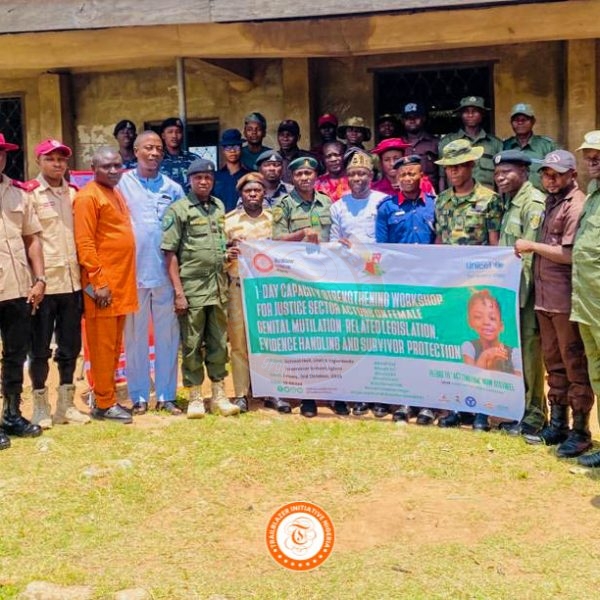 Each year, 6 February marks the International Day of Zero Tolerance for Female Genital Mutilation. The day is observed as a way to raise awareness about female genital mutilation/cutting (FGM/C), and to galvanize support to end the practice. Learn more about the issue below, and find out how UNICEF is working with communities and governments to help eliminate FGM/C worldwide.
Each year, 6 February marks the International Day of Zero Tolerance for Female Genital Mutilation. The day is observed as a way to raise awareness about female genital mutilation/cutting (FGM/C), and to galvanize support to end the practice. Learn more about the issue below, and find out how UNICEF is working with communities and governments to help eliminate FGM/C worldwide.
What is female genital mutilation/cutting?
Female genital mutilation/cutting (FGM/C) is a procedure performed on a woman or girl to alter or injure her genitalia for non-medical reasons. It most often involves the partial or total removal of her external genitalia. In some communities, FGM/C may be commonly referred to as ‘female circumcision’. However this term has been criticized as it can normalize the practice by drawing parallels with male circumcision without distinguishing its serious physical and psychological harm.
Why is it practised?
In many of the countries where female genital mutilation is performed, it is a deeply entrenched social norm rooted in gender inequality. The reasons behind the practice vary. In some cases, it is seen as a rite of passage into womanhood, while others see it as a way to suppress a woman’s sexuality. Many communities practise genital mutilation in the belief that it will ensure a girl’s proper upbringing, future marriage or family honour. Some also associate it with religious beliefs, although no religious scriptures require it.
Why is it a risk for girls and women?
FGM/C has no health benefits and often leads to long-term medical complications, including severe pain, prolonged bleeding, infection, infertility and even death. It can also lead to increased risk of HIV transmission. Women who have undergone genital mutilation can experience complications during childbirth, including postpartum haemorrhage, stillbirth and early neonatal death In addition to its physical risks, FGM/C is a violation of girls’ and women’s fundamental human rights.
How prevalent is FGM/C?
While the exact number of girls and women worldwide who have undergone genital mutilation/cutting remains unknown, at least 200 million girls and women aged 15–49 from 30 countries have been subjected to the practice. Of these 200 million, more than half live in just three countries: Egypt, Ethiopia and Indonesia. The practice is almost universal in Djibouti, Guinea and Somalia, where over 90 per cent of women and girls undergo some form of genital mutilation or cutting.









